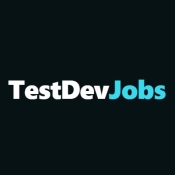
TypeSchema
Universal adapter for interacting with any validation schema.
TypeSchema is a powerful and innovative platform designed to simplify and enhance the development of TypeScript applications.
It provides a seamless way to manage, validate, and enforce type safety across projects, making it an indispensable tool for developers looking to build robust and maintainable codebases.
TypeSchema stands out by automating many of the repetitive tasks associated with type management, allowing developers to focus more on writing clean and efficient code. Its integration with modern development workflows makes it an excellent choice for teams committed to leveraging the full potential of TypeScript.
Key Features:
- Type Safety Enforcement: Ensures type safety across your entire codebase, reducing runtime errors and improving code quality.
- Schema Validation: Provides built-in tools for validating schemas, making sure that data structures conform to expected types and formats.
- Seamless Integration: Easily integrates with existing TypeScript projects and workflows, enhancing development processes without adding complexity.
- Automation: Automates the management and validation of types, saving developers time and reducing the likelihood of manual errors.
- Cross-Platform Compatibility: Works seamlessly across different platforms and environments, making it versatile and adaptable to various project needs.
- Extensibility: Offers extensibility through plugins and custom configurations, allowing teams to tailor TypeSchema to their specific requirements.
- Developer-Friendly Interface: Provides a user-friendly interface that simplifies type management, even for those who are new to TypeScript.
- Comprehensive Documentation: Comes with extensive documentation and examples, helping developers quickly get up to speed and make the most of its features.
- Performance Optimization: Helps in optimizing the performance of TypeScript applications by ensuring efficient type management and validation.
- Open Source: Available as an open-source project, encouraging community involvement and continuous improvement.
Find on TypeSchema GitHub:
Tags:
DevToolsJavaScriptGithubOpen Source


